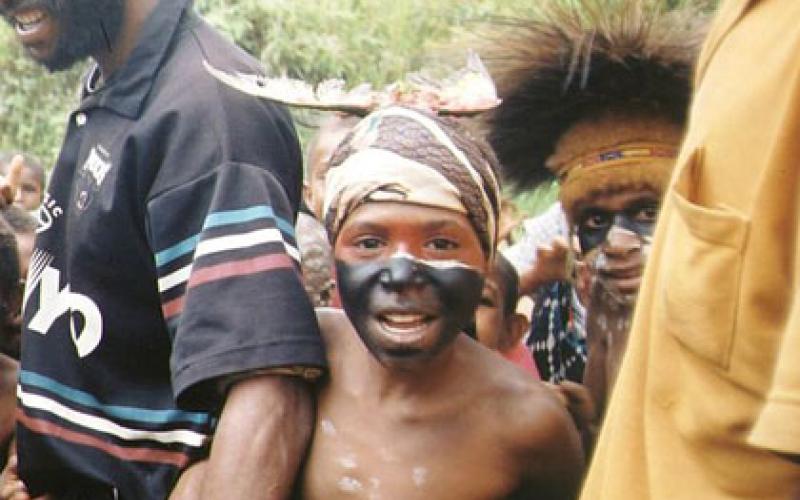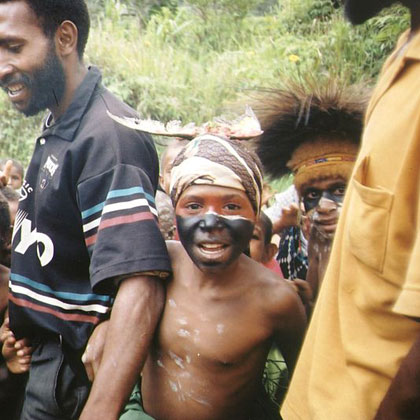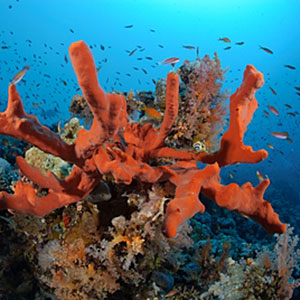Can cultural conservation pay biodiversity dividends?

Can cultural conservation pay biodiversity dividends?
Regions containing much of the biological diversity on Earth should be conserved for reasons beyond the plant and animal species within them.
Original Paper
L. J. Goren, Suzanne Romaineb, Russell A. Mittermeierc, and Kristen Walker-Painemillad, "Co-occurrence of linguistic and biological diversity in biodiversity hotspots and high biodiversity wilderness areas", Proceedings of the national Academy of Sciences, 109 (2012), 8032 – 8037: DOI: http://dx.doi.org/10.1073/pnas.1117511109
Myers N, Mittermeier RA, Mittermeier CG, da Fonseca GAB, Kent J (2000) Biodiversity hotspots for conservation priorities. Nature 403:853–858.
Mittermeier RA, et al. (2003) Wilderness and biodiversity conservation. Proc Natl Acad Sci USA 100:10309–10313
Linguists predict that 50-90% of all languages could be lost by the end of the century. Recent research indicates that much of the remaining linguistic diversity on our planet occurs in regions like New Guinea, an island already notable for its biological diversity.
International and continent-wide studies have long recognized a general correlation between linguistic and biological diversity in large areas such as Oceania, West Africa, and the Americas. But until recently, data limitations have constrained the identification of specific patterns. Also known as "biodiversity hotspots" and "high biodiversity wilderness areas", these regions are characterized by high occurrences of endemic species and an alarming loss of natural habitats. Using precise geographic data on language occurrences, compiled by Global Mapping International, researchers from Oxford, Pennsylvania State University and Conservation International analyzed the geographic distribution of non-migrant and indigenous languages in regions defined solely by biological criteria. Their findings, published in the Proceedings of the National Academy of Sciences,revealed that nearly three-fourths of the more than 6,900 languages spoken on Earth occur in 35 biodiversity hotspots and 5 high biodiversity wilderness areas. Like many of the plant and animal species in these regions, 58% of these languages are also under threat of extinction, with many spoken by 10, 000 people or less.
These findings are especially intriguing because biodiversity hotspots were defined solely on the presence of endemic or unique species and the amount of natural habitat loss. There are several possible explanations for these striking patterns of co-occurrence. Some theories consider linguistic divergence a by-product of adaptation to complex ecosystems – such as those found in biodiversity hotspots; others attribute the connection to the cultural independence that is possible among communities living amid abundant resources. Ultimately, these findings confirm that locations with higher linguistic and cultural diversity tend to contain a more diverse variety of species and habitats. For conservationists, the research adds to mounting evidence in favor of conserving the intricate relationship between people and their natural environment.
Contrary to the status quo, social scientists, development professionals, biologists and conservationists now have grounds to collaborate on conservation efforts and human rights issues at regional and continental scales. For decades, communal interests were excluded from conservation programs or included as fringe benefits. And in many places, this approach engendered communal conflicts that threatened the success of those programs. These findings raise an old question: What are the chances of success for conservation strategies that separate endemic species from the host communities within which they evolved?




